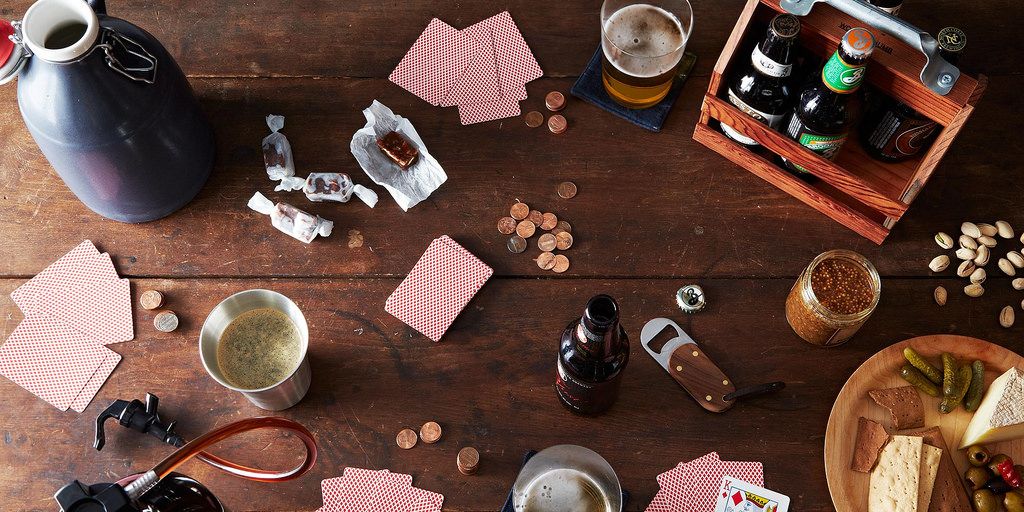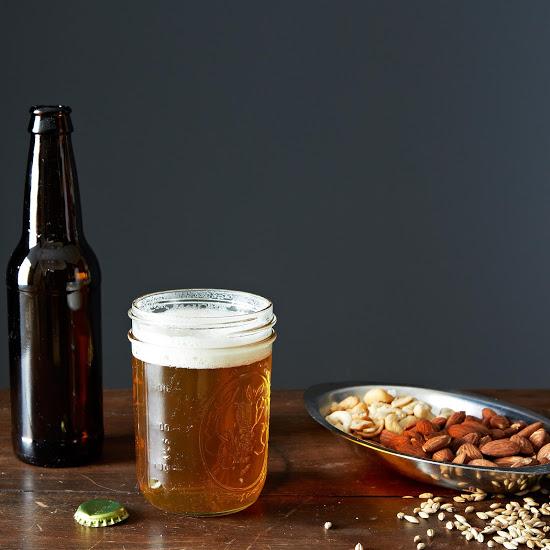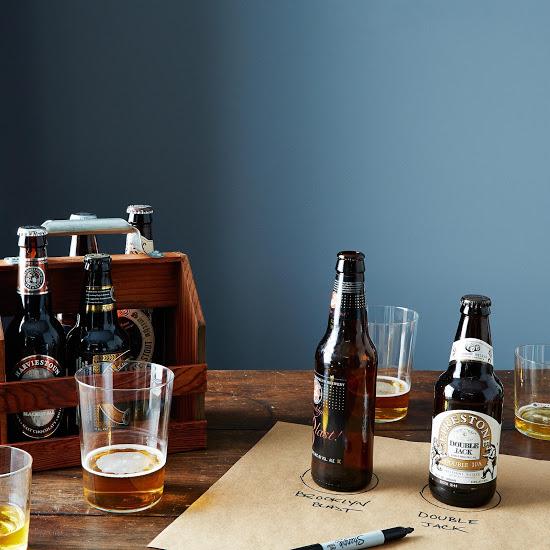After tasting whiskey and wine, beer was the next logical step. This week, Goose Island Brewery answers some of our biggest beer questions—over a few pints, of course.

Beer is our trusty cookout companion, Oktoberfest mascot, and after-work savior. And, as it turns out, our favorite beverage has—wait for it—more depth of flavor than wine. Or so explained Jesse Valenciana, a representative from Goose Island, at a recent beer tasting held for the Food52 team. While many people think that wine is more complex than beer, there are only one to two foundational ingredients in wine (grapes and sometimes yeast) while in beer, there are four ingredients right off the bat: hops, water, malt, and yeast. As a result, wine has a few hundred different flavor profiles, while beer has over 3,000. So pop open a bottle or pour yourself a draft—here are a few more of our favorite takeaways from the tasting:
1. Aging isn't just for wines and whiskey.
It's not uncommon for some varieties of beer to be aged in oak barrels. Goose Island ages their sour beers for 18 months in flavor-neutral oak barrels and leaves one of their imperial stouts in bourbon barrels for up to a year. The aging process gives their sour beers a slightly oaky flavor and infuses the stout with charred wood notes as well as vanilla and leather flavors.
More: Here's how to drink beer like you're in Eastern Europe.
Beers even age slightly in the bottle as they slowly oxidize. Over time, the hops and sharper flavors tend to fade, giving way to fuller flavors from the malt. So should you let your beer sit? It completely depends on your preference—test it out and see what tastes best for you.
2. Like wine, there are ideal regions for growing hops.
Jesse explained that while beer has expanded from its European roots to encompass a variety of different styles from different regions, there's one common theme: The hops used for a lot of beers grow along the same circle of latitude, the 49th parallel—think Bavaria and Champagne, France. He said, "The 49th parallel is known as the ideal latitude for hops. We have a hop farm called Elk Mountain that is located in Bonners Ferry, Idaho that lies on the 49th parallel and produces a lot of popular hops used in various beer styles."


3. All sour beer starts off as "regular" beer.
Some sour beers taste like bubbly wine, but they all start off with regular beer as their base. Wild yeasts are added during the fermenatation process to produce the tart and acidic flavors that are characteristic of sour beer.
4. There isn't one, but several types of fermentation processes.
Goose Island uses three different types of fermentation processes, depending on the type of beer: top, bottom, and spontaneous. Jesse explained that top fermentation is when "ale yeast that thrives in warmer climates climb to the top of fermentation tanks." Bottom fermentation is used with "lager yeast strains that prefer colder temperatures and ferment slower," taking a longer time to fall to the bottom of the tanks. Finally, he said that "spontaneous fermentation happens when beer is exposed to the surrounding open air to allow wild yeast and bacteria to literally infect the beer."
5. Beer tastes delicious with food! (Okay, we already knew this one, but it bears repeating.)
Jesse said that what he considers to be one of the most common misconceptions about beer is that it doesn't pair with food as well as wine does. He cites the thousands of flavor varieties in beer as evidence that there's a perfect beer for every food. Don't believe us? Beer pairs just as well with ice cream as it does with cheese and crab cakes.
In the end, Jesse had one primary piece of advice: He said that those who don't consider themselves to be "beer people" should just try more beer. With so many styles and flavors out there, there's something for everyone.
What are some of your favorite ways to enjoy beer? Tell us in the comments below!
Right-hand photo by Ryan Dausch; all others by James Ransom




See what other Food52 readers are saying.